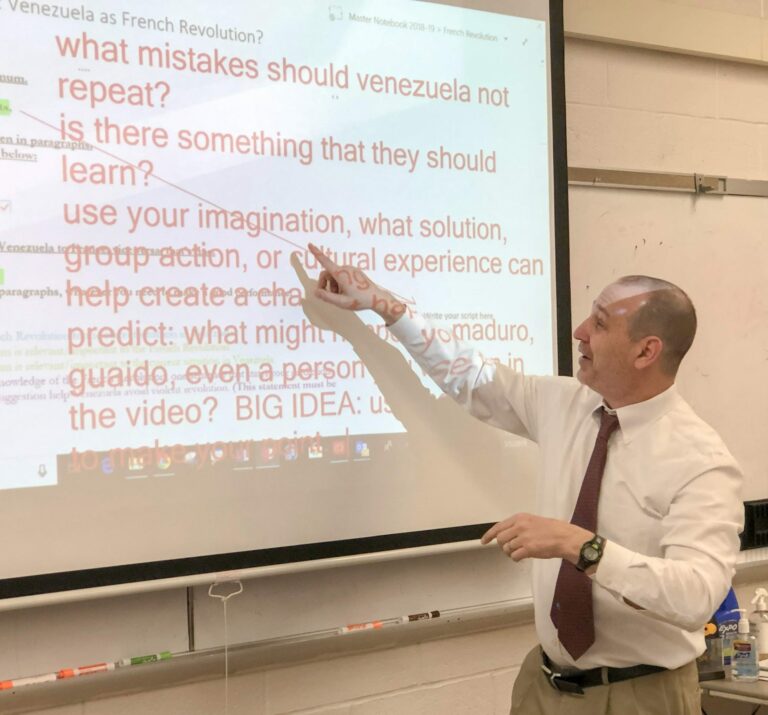by Andrew McAlpin, Camden County Tech
As an Automotive Teacher working alongside many other Career and Technical Education (CTE) teachers in New Jersey, I am proud of our passion to roll up our sleeves and put our best work forward. I see a common bond and goal by all to continue and advance CTE students. Teachers are using what we have in an e-learning environment to sustain and prepare our students for tomorrow’s jobs. This creative work ethic to get things done allows us to fulfill student needs and creates a drive to work harder to achieve our goals of supporting our students.
CTE teachers are most often teaching in equipment-rich shops and lab environments, so the change for these programs and students to remote learning presents a different set of hurdles. CTE teachers are learning new digital tools at record speeds and cutting implementation costs down by utilizing web-based collaboration tools provided by many organizations at reduced prices or even free.
For the automotive programs, Charles Klasman, Technical Training Education Manager of Subaru of America, has extended Subaru’s online platform to all the automotive technology teachers in New Jersey and around the country in need, granting free access to Subaru’s virtual learning labs. During this rollout, Klasman led many online meetings that introduced several automotive teachers from around the country, bringing many of us together. We were able to see collectively we were all experiencing many of the same problems and in the same predicament. Lending best practices and coaching each other is the only way to provide a more exceptional learning environment to help our students during this crisis.
Other organizations such as Person’s CDX learning, I car, Snap-on tools, EC3 certifications, and countless others are also lending their assistance to CTE teachers. Many have provided training material blended to career standards in safety, welding applications, digital measuring tools, and other inquiry-based products geared to help promote online CTE education.
Although our training labs and career learning areas are the ideal settings, e-learning has added significant value to the learner during this crisis. Skillsets regarding only hands-on applications are not enough in today’s world of technical implementation. Adapting to teaching these skills, along with knowledge and theory in any CTE program is a must.
The outreach from our colleagues and industry partners in the last several weeks is impressive. Utilizing web training and virtual meetings with administrators and teachers not only in our district and state but around the country shows the meaning of togetherness and learning best practices. We are not alone when we can lean on each other for help.
It has not been easy. This new approach or today’s certainty is a significant journey. Countless hours behind a computer screen, reorganizing lessons has many of my fellow CTE teachers repeatedly saying, “I’d rather be in my shop.” But reality dictates differently.
This crisis may have a silver lining for the implementation of digital transformation. It has forced the use of digital media tools. As CTE teachers learn to implement these tools, we can also learn to use them to increase teaching effectiveness and enhance student engagement. The fast learning curve is a struggle but the hard work will pay dividends developing and gaining new skills. The positive benefit out of all this is that we are going to add excellent value to our pedagogical practices. Or, I should say for CTE teachers, add to our repertoire of teaching tools now and for the future.




